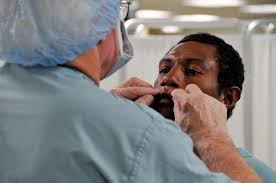Plastic surgeons repair and reconstruct damaged areas of the body to restore physical and aesthetic function for patients. This specialty of surgeons focuses on treating things like birth defects, injuries, and disfigurement from illnesses. Here are a few roles of a plastic surgeon in reconstructive surgery.
Restoring Functionality
A plastic surgeon restores physical functionality by repairing damaged tissues. Restoring function to affected body parts enables patients to perform daily activities with more ease. Reconstructive surgery provides patients with improved movement, breathing, eating, and even speaking. Procedures restore physical functions by repairing or reconstructing defective components, such as damaged muscles or skin.
Surgeons restore damage from trauma, accidents, and burns. They reconstruct damaged structures that have been destroyed. These might include everything from skin to facial structure. Rehabilitation of damaged body components helps the body recover from lost functions in trauma, such as sensation and movement. Reconstructing damaged parts of the body allows patients to regain function after injury.
Helping Cancer Survivors
Following surgeries that remove tumors, such as mastectomies, these specialists can reconstruct affected areas. Restoring these body parts helps patients’ recovery by reversing disfigurement and helping them return to normal. Reconstruction can help restore physical form and a sense of bodily autonomy for individuals following cancer treatment. Reforming breasts enables patients to begin the healing process from cancer.
Advancing Microsurgery Techniques
Using microsurgery techniques, surgeons transfer tissue from one area of the body to another for reconstruction. Microsurgery includes operating on tiny blood vessels and nerves under magnification for complex reconstructions. Transferring tissue from one part of the body to another to cover large areas of damage improves healing. This process supports complex reconstructions, such as treating severe burns.
Correcting Congenital Defects
Surgeons fix birth deformities using reconstructive surgery to restore standard form and function. Defect repair, including cleft palates, craniofacial abnormalities, and defects of the limb, improves the growth physiology and structure of a child. After surgery, therapy will help children perform everyday functions. Surgical correction of birth defects, such as cleft lip, enhances development by improving feeding, speech, mobility, and overall growth in early life.
Managing Wound Healing
Surgeons treat complex non-healing wounds by procedures like skin grafting, tissue flap, and vacuum-assisted closure. Wound closure provides healing in the event that other treatments fail. Surgical wound care helps avoid infection risks and complications associated with long-healing open wounds. It also prevents infection, promotes tissue regeneration, and reduces complications, leading to improved recovery outcomes.
Enhancing Scar Appearance
Enhancing the appearance of scars through surgical intervention helps patients feel more comfortable with their appearance after scarring. Scar revisions use Z-plasty and other techniques to rearrange tissues and transform patients’ deformed features into a more natural appearance. Surgeons use methods to make older scars less visible. Smoothing the scars can help patients feel more comfortable with their appearance and regain their sense of identity.
Consult a Plastic Surgeon Today
A plastic surgeon restores physical function by repairing damage from injuries, illnesses, and defects. They reconstruct features and capabilities to promote patients’ physiological healing. Procedural expertise enables surgeons to perform a wide range of reconstructive surgeries, including tissue repair, limb reconstruction, and facial restoration, tailored to the specific needs of the patient. Book a consultation with a surgeon today.
- FREHF – The Revolutionary Future Of Human-Centered Technology!
- Adsy.Pw/Hb3 – Boost Your SEO And Drive More Traffic!
- Fitness Based Vacations By Timeshealthmage.com!
- TimesHealthMag Tips For Improving Sleep Quality – Expert Advice For Better Rest!
- How TimesHealthMage Helps Improve Your Lifestyle Habits!


Leave a Reply